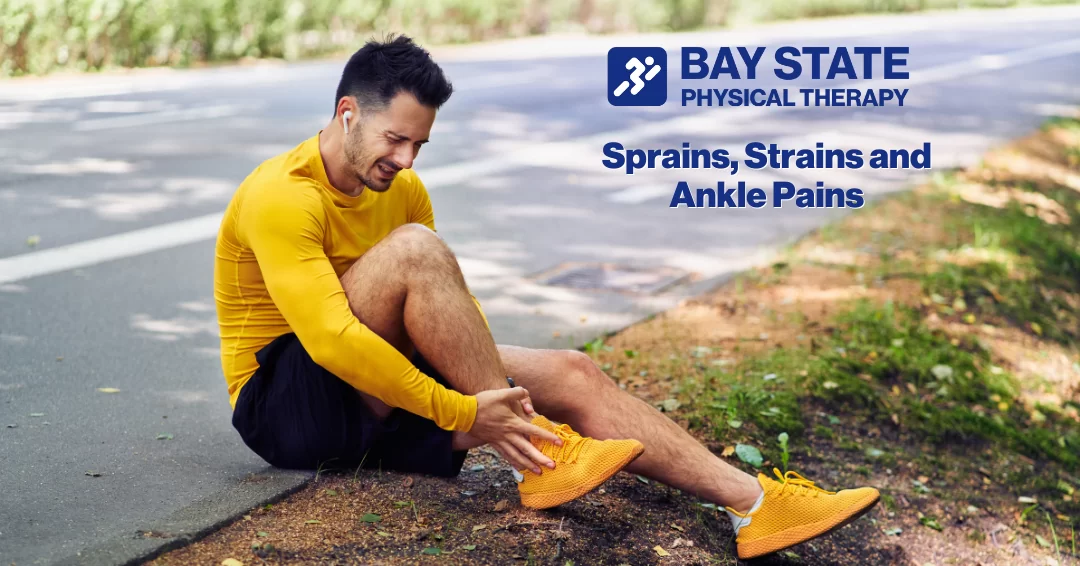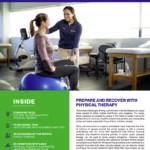What You Need to Know and When to See a Therapist
There you are, walking through the park on a bright summer day, when suddenly you stride right into a hole. Oops- there goes your ankle! Before you know it, you are in pain, collapsed on the ground, and hoping no one saw your less-than-graceful fall. You make it to your feet, limping back to your care, hoping you didn’t do some serious damage. Is it a sprain or a strain of your ankle, or something worse?
How do you know whether it is an injury that will go away on its own or whether to call your physical therapist? Here’s some information to help you understand what may be going on, but you can always call our physical therapist to get more answers!
Sprain or Strain: What’s the Difference?
When it comes to ankles, this is one of the most commonly asked questions of a physical therapist. It’s actually much easier to differentiate between the two than you might think. But before we can talk about the difference between a sprain and a strain, you need to know the difference between a tendon and a ligament. Tendons are strong, fibrous tissue that connects bone to muscle. Ligaments are similar types of strong connective tissues that bond one bone to another bone.
What is a Sprain?
A sprain happens when the ligaments of a joint (your ankle, knee, wrist, elbow, etc.) are twisted so violently that these strong connective tissues are stretched or slightly torn. Typically, with a sprain, the joint remains in place. A sprain can be mild, resulting in only a few minutes or hours of pain, or it can be more severe, requiring physical therapy or even surgery.
What is a Strain?
A strain happens when the tendons that connect a muscle to bone are stretched or slightly torn. There are two types of strains—acute and chronic. Acute strains happen as a result of an injury. You may slip on ice and fall, straining a muscle in your leg while you try to balance yourself. Chronic strains happen when you perform the same motion over and over. Gymnasts, tennis players, golfers, and other athletes are likely to develop strains when they are not properly conditioned, do not stretch, or use improper equipment.
How Physical Therapy Can Help a Sprain or Strain
Interestingly enough, working with a physical therapist has more benefits than simply regaining your strength after an injury. These medical professionals are highly trained movement experts who not only can help you recover from a sprain or strain, they can help you prevent injuries in the future. A physical therapist also offers drug-free pain relief that keeps you mobile and strengthens your body.
In the acute phase of the injury, pain relief is one of the primary goals. Severe sprains or strains are often painful. A physical therapist will offer several pain-relieving techniques—ice, heat, ultrasound, TENS, massage, and stretching. They will also teach patients how to manage their symptoms at home to ensure healing continues.
Once the injury has healed, a physical therapist will move on to preventing future injury. Once you have sprained a joint, you are more likely to do it again without proper therapy. The same goes for strains. Strengthening muscles around an injured area can often keep you from experiencing future problems.
Find Relief with Physical Therapy
Our goal at Bay State Physical Therapy is to help restore you to your normal level of physical performance and prevent re-injury. Your treatment plan will typically include a combination of exercises to restore joint mobility, improve balance, and strengthen the foot and ankle muscles.
Don’t let foot and ankle pain slow you down! Take your first step toward relief from your ankle pain by calling your nearest Bay State Physical Therapy location today or completing the form below to request an evaluation!
Resources:
- https://www.mayoclinic.org/diseases-conditions
- https://www.sports-health.com/sports-injuries/ankle-and-foot-injuries/
Tags: ankle, Physical Therapy, Physical Therapist, Healths, Exercise, Sprains, Strains, Fitness, Running, Stretching






